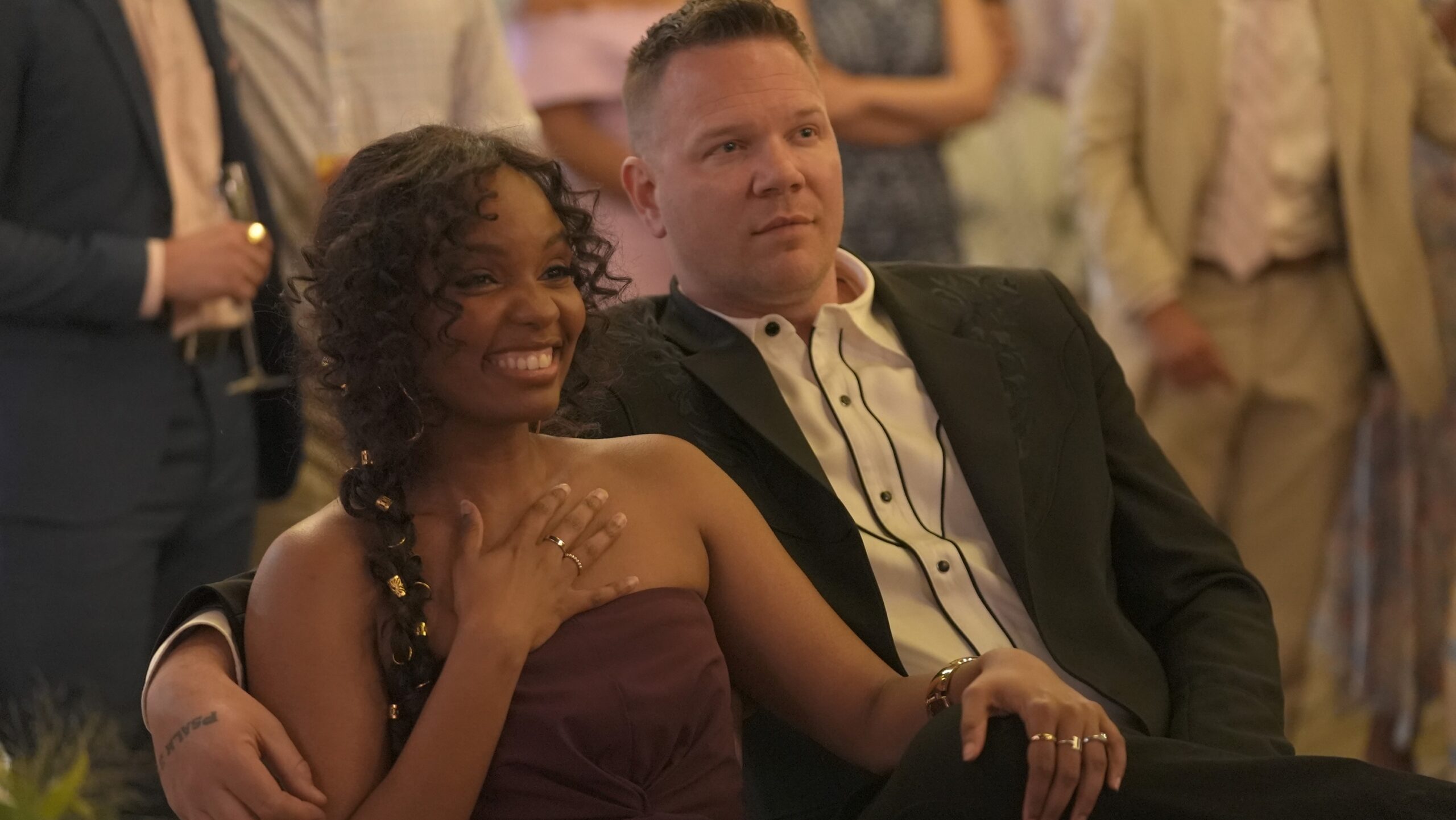Rosalynn Carter, a true life partner to Jimmy Carter who helped propel him from rural Georgia to the White House in a single decade and became the most politically active first lady since Eleanor Roosevelt, died on Sunday in Plains, Ga. She was 96.
The Carter Center in Atlanta announced her death. It had disclosed on May 30 that Mrs. Carter had dementia. “She continues to live happily at home with her husband, enjoying spring in Plains and visits with loved ones,” a statement by the center said at the time. On Friday, the center said she had entered hospice care at home.
Mr. Carter, 99, the longest-living president in American history, has also been in hospice care at their home, but so far he has defied expectations. The Carter Center had announced in February that he was stopping full-scale medical care “after a series of short hospital stays,” and his family was preparing for the end. But he has hung on — and celebrated his most recent birthday on Oct. 1.
Mrs. Carter was the second longest-lived first lady; Bess Truman, the widow of President Harry S. Truman, was 97 when she died in 1982.
Over their nearly eight decades together, Mr. and Mrs. Carter forged the closest of bonds, developing a personal and professional symbiosis remarkable for its sheer longevity.
Their extraordinary union began formally with their marriage in 1946, but, in a manner of speaking, it began long before that, with a touch of kismet, just after Rosalynn (pronounced ROSE-a-lynn) was born in Plains in 1927.
She had been delivered by Mr. Carter’s mother, a nurse. And a few days later, in a scene that might have been concocted by Hollywood, his mother took little Jimmy to Rosalynn’s house, where he “peeked into the cradle to see the newest baby on the street,” as he recalled in his 2015 memoir, “A Full Life, Reflections at Ninety.”
He was not quite 3. Eighteen years would pass before the two would truly connect. But once they did, they became life and work partners, melding so completely that as president Mr. Carter would call her “an almost equal extension of myself.”
Reared in the same tiny patch of Georgia farmland, 150 miles south of Atlanta, they were similar in temperament and outlook. They shared a fierce work ethic, a drive for self-improvement and an earnest, even pious, demeanor. Their Christian faith was central to their lives. Both were frugal. Both could be stubborn.
After Mr. Carter lost his re-election bid in 1980 to Ronald Reagan, he and Mrs. Carter embarked on what became the longest, most active post-presidency in American history. They traveled the world in support of human rights, democracy and health programs; domestically, they labored in service to others, most prominently pounding nails to help build houses for Habitat for Humanity.
In October 2019, after more than 73 years of marriage, they became the nation’s longest-married presidential couple, surpassing the record set by George H.W. Bush and Barbara Bush. The Carters marked their 77th wedding anniversary in July.
In the continuum of first ladies after Mrs. Roosevelt, Mrs. Carter broke the mold. Like most of the others, she championed a cause — hers was the treatment of mental illness. But she also immersed herself in the business of the nation and kept a sharp eye on politics, a realm her husband famously claimed to ignore.
She frequently attended Mr. Carter’s cabinet meetings and traveled abroad to meet with heads of state in visits labeled substantive, not ceremonial. She often sat in on the daily National Security Council briefings held for the president and senior staff.
The couple held a weekly working lunch to discuss policy. Mrs. Carter testified before Congress and lobbied its members. Her handwriting appears on the drafts of many of her husband’s speeches and policy addresses.
Though soft-spoken, she was nevertheless assertive about her power and influence in public affairs.
“I was more a political partner than a political wife,” she wrote in her memoir, “First Lady From Plains,” published in 1984. She was referring to her years as first lady of Georgia, but her description applied equally to her tenure in the White House, from 1977 to 1981.
“When I come home very discouraged,” Mr. Carter told The New York Times in 1979, “she listens to only just a few words and she looks around at me and says that I’ve got a problem with this or that. She knows enough about the background of that problem that I don’t have to sit for two hours and explain it to her.”
A full 16 years before Bill and Hillary Clinton would offer themselves to the nation as a package deal with the slogan “Buy one, get one free,” the Carters functioned as near co-presidents. The New York Times columnist Tom Wicker wrote in 1979 that Mrs. Carter “may be the most powerful first lady since Edith Bolling Wilson virtually took over for a stricken president,” Woodrow Wilson.
Mrs. Carter entered the White House at the height of the women’s movement and seemed to derive strength from it, though she did not identify herself as a feminist. She lobbied vigorously for the Equal Rights Amendment and for women to participate at all levels of government, from honor guard at the White House to justice of the Supreme Court. She had her staff assemble a roster of qualified women for various appointments, according to the National First Ladies’ Library, and she suggested candidates for federal judgeships.
With her push, Congress formally recognized the office of the first lady as a federal position and provided funding for a staff. Mrs. Carter became the first presidential wife to carry a briefcase daily to a White House office.
While Mr. Carter held himself above politics, saying it was not in his DNA — to the detriment of his presidency, his critics said — his wife acknowledged that for her, politics came naturally.
“I’ve always said I’m more political than Jimmy,” she once said. “I’m political, he’s not.”
Her husband’s advisers concurred. “She is clearly the most political first lady, maybe in history, in terms of being involved in politics and in the campaign,” Patrick Caddell, Mr. Carter’s pollster, told The Times during the 1980 re-election effort.
Robert S. Strauss, former chairman of the Democratic National Committee, called her, admiringly, “a political animal.”
The news media often asked Mrs. Carter whether she should be wielding so much influence given that she had not been elected.
As she told The Times in 1978: “I don’t think the people in this country are worried about where I’m going.” She added: “And I’m not doing what I’m doing for people who write about it. I’m doing it for the people I can help. And I really believe that I can help.”
She pointed out that she had worked outside the home all her life. “I can’t stay at home and do Cokes and teas,” she said, “although I think that for those people who want to do that, then that’s surely important to them.”
The remark was strikingly similar to a sentiment that Mrs. Clinton would express in 1992: “I suppose I could have stayed home, baked cookies and had teas,” Mrs. Clinton said. While Mrs. Clinton’s remark provoked a backlash, Mrs. Carter never drew that kind of wrath; she was not as contentious a figure as Mrs. Clinton and was never perceived as harboring political ambitions of her own.
But her impulse to use her influence could create headaches for the Carter administration. And in one particular case it led to political disaster. Shortly after scores of Americans were taken hostage in Iran in 1979, creating the biggest crisis of the Carter presidency, Mrs. Carter, without telling her husband, asked his brother, Billy, to use his ties to the Libyan government to seek the hostages’ release.
Nothing bad resulted from her request, but the subsequent disclosure that she had acted unilaterally on such a sensitive subject shocked the nation. Billy Carter, who eventually registered as a foreign agent to Libya, was often perceived as trading on his brother’s position for personal profit, and at the time of Mrs. Carter’s request, his ties to Libya were under investigation by the Justice Department.
For all of her involvement in presidential affairs, Mrs. Carter asserted that once her husband had made up his mind, she was powerless to change it. “He might be influenced to a certain degree,” she said, “but people just don’t know Jimmy Carter if they think I can persuade him to do something he doesn’t want to do.”
This was evident in early 1977, when he decided to lower the thermostats in the White House to 65 degrees during the day and to 55 at night. He wanted to set an example to encourage Americans to conserve energy and reduce reliance on foreign oil. Mrs. Carter said she got so cold that she could not concentrate and that her aides had to type with their gloves on. When he spurned her plea to crank up the thermostat, she resigned herself to wearing long underwear.
A Crush From Afar
Eleanor Rosalynn Smith was born on Aug. 18, 1927, the eldest of four children of Wilburn Edgar and Frances Allethea (Murray) Smith, who was known as Allie. Her father was a car mechanic, her mother a dressmaker.
After Rosalynn was brought into the world by Lillian Carter, Jimmy Carter’s mother, who also helped deliver her siblings, Rosalynn became playmates with Jimmy’s younger sister, Ruth (later Ruth Carter Stapleton, the evangelist).
As a teenager, while Jimmy was a midshipman at the U.S. Naval Academy in Annapolis, Md., Rosalynn developed a crush on him — she had seen a picture of him in his Navy uniform on Ruth’s wall. Rosalynn and Ruth conspired for years to get him to notice her, but after his fateful glimpse of her as a newborn, they had few encounters.
The Smiths were not as well off as the Carters. Rosalynn was 13 when her father died of leukemia, and her mother was left with an insurance policy that paid $18.75 a month. Rosalynn helped with the sewing and housekeeping and with raising her siblings. She also worked at the local beauty parlor, shampooing hair.
Despite her hardships and obligations, she was valedictorian of her class at Plains High School. She later commuted to Georgia Southwestern College, then a junior college (now Georgia Southwestern State University), in nearby Americus.
In 1945, when Mr. Carter was home on leave, he finally noticed Rosalynn and asked her out. She said yes.
“She’s the girl I want to marry,” he told his mother after that first date.
He later wrote, “She was remarkably beautiful, almost painfully shy, obviously intelligent, and yet unrestrained in our discussion on the rumble seat of the Ford Coupe.”
To Rosalynn, this upwardly mobile midshipman represented an escape from the small-town life that seemed to be her fate.
When she visited him at Annapolis that winter, he proposed, but she turned him down; she had promised her father on his deathbed that she wouldn’t marry until she finished college.
By summer, they had both graduated, she from junior college and he from Annapolis. They married on July 7, 1946. She was 18, he was 21.
The couple moved to Norfolk, Va., where Mr. Carter was stationed, though they would soon hopscotch across the country. The birthplaces of their three sons reflected their varied postings: John William was born in Virginia in 1947; James Earl III in Hawaii in 1950; and Donnel Jeffrey in Connecticut in 1952. (Their daughter, Amy, was born in Plains in 1967, long after Mr. Carter had left the Navy.)
In addition to her husband, Mrs. Carter is survived by her four children; 11 grandchildren; 14 great-grandchildren, and her sister, Lillian Allethea Smith Wall. Her brothers, Murray and Jerrold, both died in 2003.
While in the Navy, Mr. Carter was away at sea much of the time. Although Mrs. Carter struggled at home alone with their young boys, she liked seeing the country and became increasingly confident and independent.
But when Mr. Carter’s father died in 1953 and her husband told her that they were moving back to Plains to take over the family peanut business, Mrs. Carter became distraught. She cried and screamed, she recalled in her memoir. She couldn’t bear the thought of returning to the small town they had left, or of living so close to her strong-willed mother and her strong-willed mother-in-law.
“It was the most serious argument of our marriage,” she wrote.
And one she lost.
Back in Plains, she was miserable and mostly stayed at home. Neighbors complained that she was aloof. The farm sputtered in a drought.
Eventually, Mrs. Carter eased into the financial side of the business, keeping the books and paying the bills. As she started advising her husband, their professional partnership began to develop, and she helped build the company into a lucrative farm supply business. It was a turning point in their relationship.
Politics Beckons
The civil rights movement brought upheaval to the South in the early 1960s. The Carters, unlike many of their neighbors, supported school desegregation, and Mr. Carter was inspired to run for office. He won a seat in the Georgia State Senate and in 1966 lost his first try for the governorship. Throughout those tumultuous years, Mrs. Carter continued to manage the business. Importantly, she overcame her terror of public speaking and immersed herself in her husband’s campaigns, helping him win the governor’s race in 1970.
“At the beginning, she was imprisoned by her shyness,” E. Stanly Godbold Jr., a Carter biographer, said in an interview for this obituary. “Once she started breaking out of her shell, she piggybacked her career onto her husband’s. Then she had a foot in both worlds, the liberated career woman as well as the supportive spouse.”
After Mr. Carter defeated Gerald R. Ford for president in 1976, Mrs. Carter brought a modesty to the White House, in stark contrast to the imperial presidency of the disgraced Richard M. Nixon, whose resignation had put Ford, his vice president, into the Oval Office.
On Inauguration Day, the Carter family walked down Pennsylvania Avenue to No. 1600. Only Thomas Jefferson had made that trek on foot before them, in 1801; the Carters’ decision began a tradition that the nation now expects of its newly minted first families.
At the inaugural balls, Mrs. Carter wore the same blue chiffon gown she had worn to the governor’s ball in Atlanta six years earlier.
The Carters sent their daughter to public school. They also brought her nanny, Mary Prince, to Washington. Ms. Prince had been wrongly convicted of murder in Georgia and, under a work-release program, assigned to work in the governor’s mansion. With Mrs. Carter’s help, she received a reprieve so that she could move into the White House, a move enabled by Mr. Carter’s having himself designated to be Ms. Prince’s parole officer. After a later re-examination of the evidence in her case, she received a full pardon.
The new first lady plunged into public affairs. At cabinet meetings, she did not speak but frequently buttonholed cabinet secretaries later to ask questions and then followed up with her husband.
More than 15 years before Mrs. Clinton caused a stir by leading President Clinton’s effort to overhaul the nation’s health care system, Mrs. Carter sought to upgrade the mental health system and expand services and protections for older Americans. Barred by statute from serving in an official capacity, Mrs. Carter was named honorary chairwoman of her husband’s mental health commission and led the White House Conference on Aging. She conducted nationwide hearings on both topics, testified before Congress and pressed for legislation.
The chief legislation she championed — the Mental Health Systems Act, which set up support and financing for community mental health centers — passed in 1980, though it was later scrapped by the Reagan administration. Another measure she had long sought — for health insurance to cover mental illness just as it covered physical illness — eventually passed but not until 2008, when President George W. Bush signed it into law.
Mrs. Carter’s activism also had global reach. She served as her husband’s envoy to Latin America. And when she learned details of the genocide in Cambodia and the refugee crisis there, she flew to see conditions for herself. She raised millions of dollars for relief and, according to the National First Ladies’ Library, she convinced Mr. Carter to increase U.S. quotas for refugees, permit food delivery directly into Cambodia and accelerate Peace Corps efforts in the region.
‘I Don’t Like to Lose’
As his re-election approached in 1980, with his poll numbers sagging, Mr. Carter, preoccupied by the hostage crisis in Iran, found himself largely confined to the White House and unable to campaign. Mrs. Carter stepped in as campaigner-in-chief, making speeches on the hustings and battling his challenger Senator Edward M. Kennedy of Massachusetts for delegates at the Democratic convention.
Although Mr. Carter won his party’s nomination, it all came to naught in November, when Reagan decimated him at the ballot box, sweeping 44 states to Mr. Carter’s six. Mrs. Carter did not hide her disappointment, saying she was “bitter enough for both of us.”
Their eviction from the White House at relatively young ages — he was 56, she was 53 — left them angry, morose and righteous. “I’d like people to know that we were right, that what Jimmy Carter was doing was best for our country, and that people made a mistake by not voting for him,” Mrs. Carter wrote at the end of her memoir, adding: “I don’t like to lose.”
Eventually they regrouped and delved into multiple projects at home and abroad.
They co-founded the Carter Center in Atlanta to promote peace, resolve conflicts and eradicate diseases. One week a year, they helped build houses for Habitat for Humanity, working on more than 4,000 homes in more than a dozen countries. And they wrote a book together, “Everything to Gain: Making the Most of the Rest of Your Life,” published in 1987.
In 1999, the Carters jointly received the Presidential Medal of Freedom, the nation’s highest civilian honor and one rarely bestowed on a husband and wife.
Mrs. Carter, who also co-founded a nonprofit that promotes childhood immunizations, served as a deacon at the Maranatha Baptist Church in Plains and liked to go fly-fishing and bird-watching with her husband. She practiced tai chi and meditated.
But her primary cause remained trying to reduce the stigma of mental illness, an effort reiterated in the Carter Center statement in May disclosing that she had dementia.
“One in 10 older Americans have dementia,” the statement said. “We hope sharing our family’s news will increase important conversations at kitchen tables and in doctor’s offices around the country.”
In championing mental health, Mrs. Carter served on several boards, hosted conferences and wrote books on the subject, including “Within Our Reach: Ending the Mental Health Crisis” (2010).
Recognizing the importance of caregiving, she founded and served as president of the board for the Rosalynn Carter Institute for Caregiving at Georgia Southwestern, her alma mater. Mrs. Carter often noted that there are only four kinds of people in the world: those who have been caregivers, those who are currently caregivers, those who will be caregivers, and those who will need caregivers.
The Carter Center announced on Feb. 18 this year that Mr. Carter would live out his final days at their home in Plains. Mrs. Carter stayed with him there, at the small one-story ranch house where, except for their four-year detour to the White House, the couple had lived since 1961.
Mrs. Carter’s dementia had blurred some of her memories, her grandson Josh Carter told The Times in August, but she never forgot who her husband was.
They still held hands, Josh Carter said, adding: “They still sit on the couch together, in the same place they’ve always sat.”






